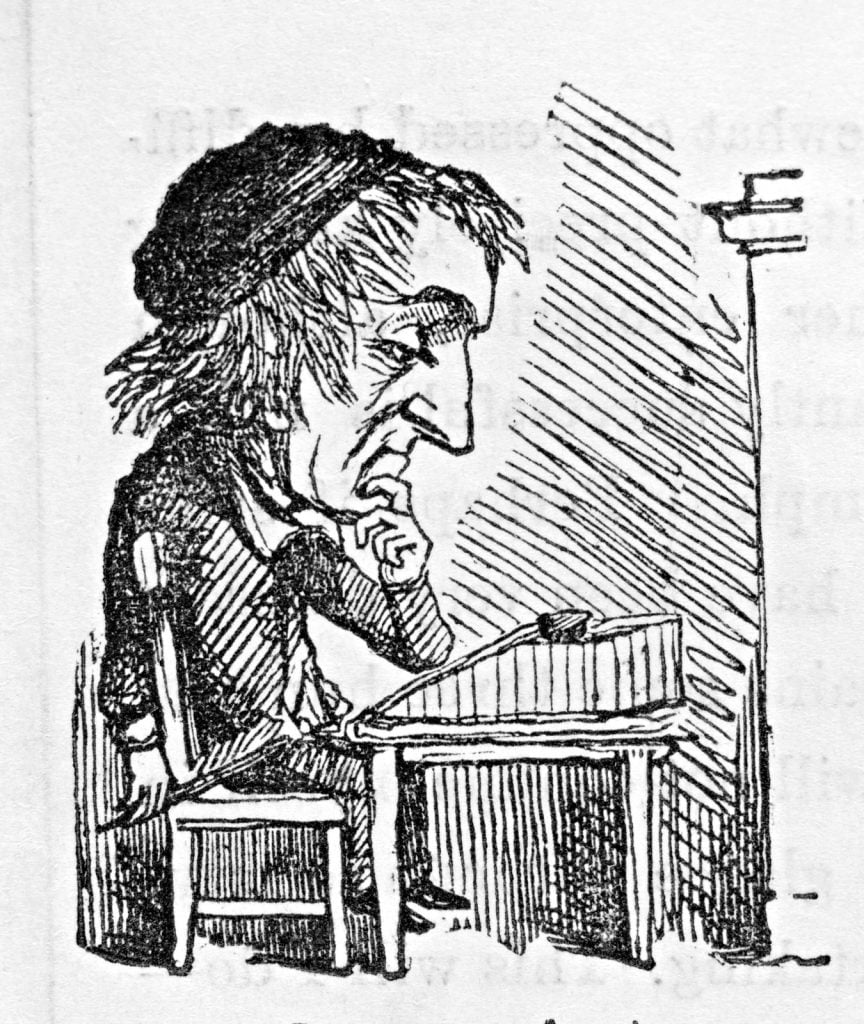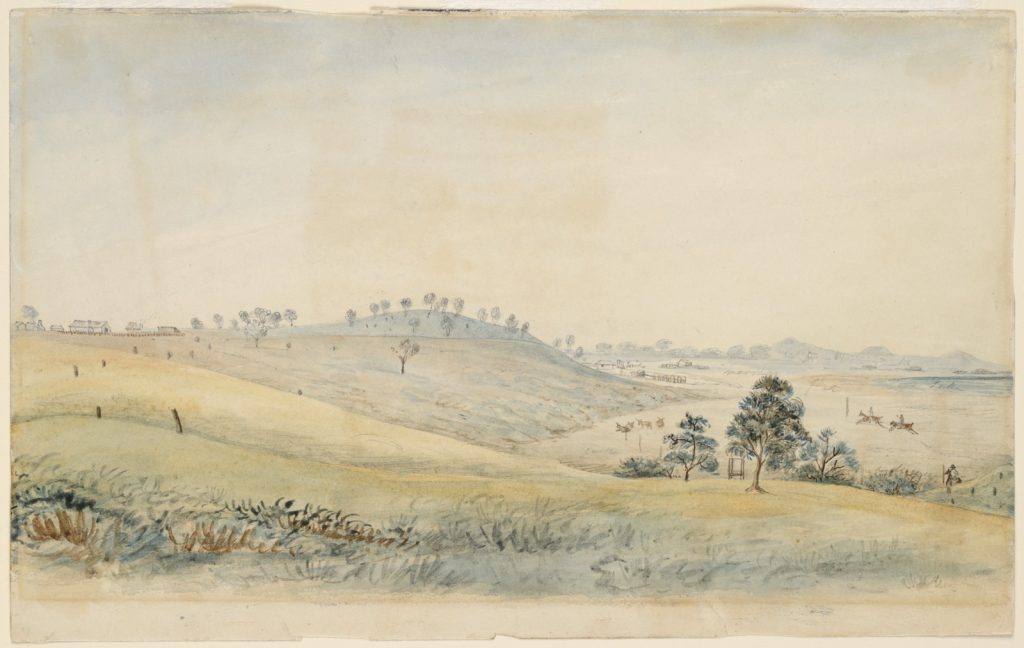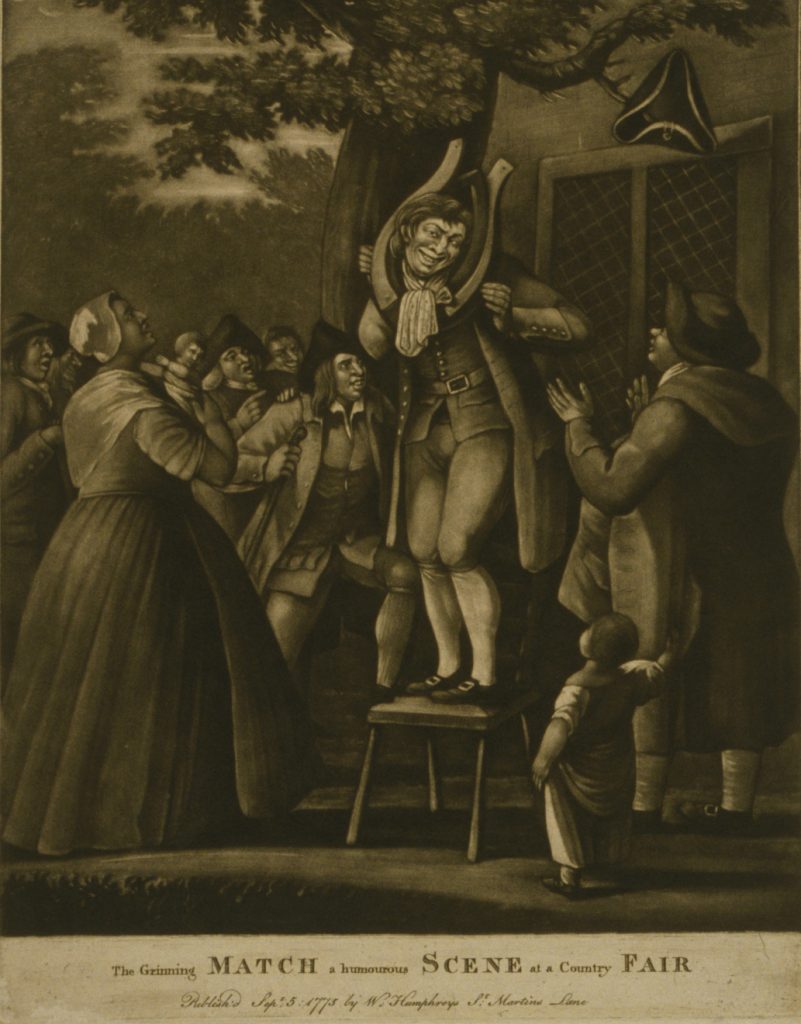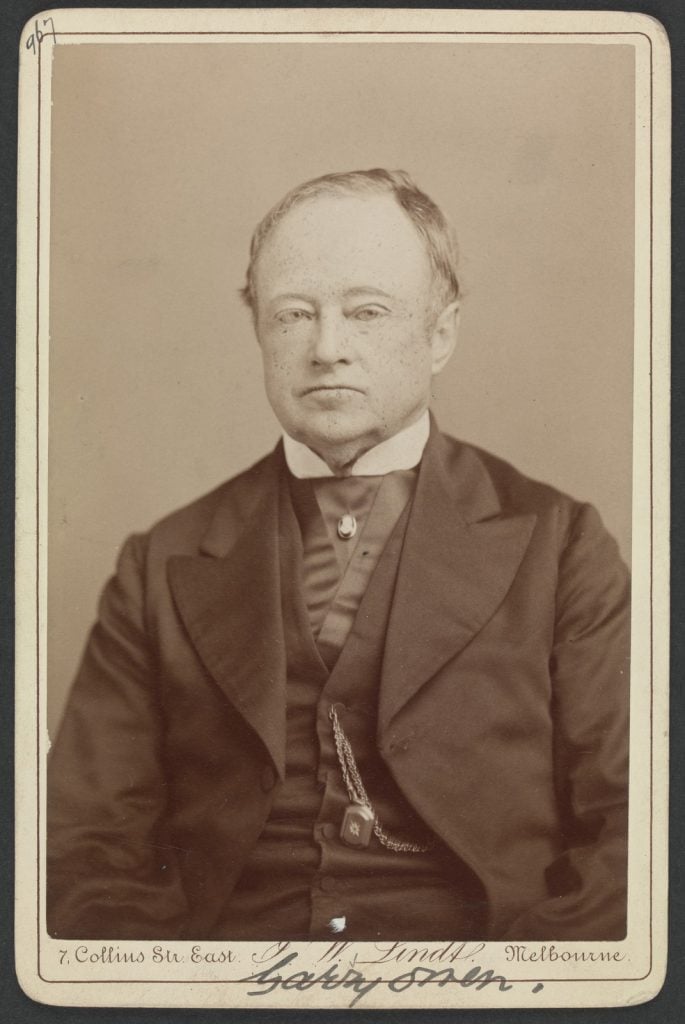Poverty, toil, conflict and hardship are suitable words to describe the first years of colonial life in the Port Phillip District 1 and it’s ‘village’, Melbourne 2. There was not much time for recreation, so when a group of Melburnians made plans to hold a horse race, it was said that “young men and maidens of the time” were “on tiptoe of expectation for al fresco flirtations.”3
John Pascoe Fawkner, one of Melbourne’s prominent settlers, was heavily involved in the planning of the horse race and its reporting. Fawkner was a man of many hats. Much of his time was spent running his pub, the Fawkner Hotel, and Melbourne’s first newspaper, the Melbourne Advertiser. Fawkner used his newspaper to promote the race, and the Melbourne Racing Club held its first meeting at his pub on the 15th January 18384. It was at this meeting that the race was organised, with the post-race dinner to be held at the hotel.

There were two sources of reporting regarding Melbourne’s first horse race. One was by Fawkner (published days after the race) whilst the other recollection was by Edmund Finn, aka ‘Garryowen’, in his mammoth opus, The Chronicles of Early Melbourne 1835-1851 (published in 1884). Garryowen’s account is from an unnamed source, and whilst being a distant recollection, does provide an interesting contrast to Fawkner’s largely positive reportage.
The racecourse and who won
The racecourse was located in a picturesque location. Garryowen’s source (an ‘old colonist’) stated that the starting post was close to North Melbourne station and followed a semi-circle loop that encompassed the location of the current Southern Cross railway station, Docklands Park (the old Gasworks) and Batman’s Hill where the winner’s post was located (a scrap of bunting held on “a post from a pole of the clothes-line order”). A ‘grand-stand’ was constructed by the lashing together of a couple of bullock drays, and the jumps for the Hunters formed by logs and gum-tree branches. 5

The races were held on Tuesday March 6th and Wednesday March 7th, 1838 and consisted of several heats. The first race was the Town Plate with a prize of 25 sovereigns. The two existing accounts of the race list different winners (Fawkner listing Mrs Datagalla, while Garryowen’s source named Postboy as winner.) However, both writers agreed that Galnare won the second race, ‘The Ladies Purse’.
The second day of racing featured the Hunter Stakes, a jumps event won by Trump, who was owned by W D G Woods. This race was unfortunate as the horse Miss Pidget fell and broke her neck, although her rider avoided injury. Fawkner’s newspaper reported that while the horse died the jockey escaped unharmed, later winning the “hunting a pig (with it’s tail greased)” 6 competition. Garryowen’s source said that the Hunter Stakes was “an utter fiasco”, with the jumps “clumsily constructed” 7, which frightened the horses and caused several accidents 8.
In the final race mentioned by Fawkner (though not by Garryowen’s source), John Batman (who was a rival to Fawkner in many ways) bet 50 pounds on his horse (Mrs Datagalla) besting Galnare (owned by Melbourne’s first surveyor, John Helder Wedge). Fawkner wrote: “this race proved the best of the whole sports”, as it resulted in a win for Galnare. Fawkner gloated: “the cheers deafening, the public… seemed pleased at the results.” 9

Games and entertainment
The races were not the sole focus of the activities. Fawkner reported that the day after the races had concluded, games such as “running for pigs with their tails greased, climbing greased poles, and leaping in sacks” were held “very much to the delight of the labouring population.”10
Garryowen’s correspondent recalled that after the first day’s races “some humorous customer” suggested that a grinning match be held. A horse collar was placed upon the competitors’ shoulders and each competitor had to pull the ugliest face possible (the game was also known as ‘Collar Grinning’). Garryowen wrote that carpenter Thomas Curnew was the Collar Grinner winner. He had a “spheroid mouth” with “an enormous set of tusky teeth”, and completed a set of contortions that made his “head seemed as if composed of whalebone and rubber”11.

The estimated few hundred attendees of the event were said to have largely enjoying themselves. Fawkner claimed that the booths were “of capacious size and teeming with the usual refreshments.” Fawkner, who had a complicated relationship with alcohol due to the misery excessive drinking caused his family and colonists (even while he ran successful pubs), stated: “if drunkenness is to be abolished; sports should (b)e more frequently encouraged and would then have a beneficial effect.” A few paragraphs later he stated “we much question the policy of tempting people to intoxication, the heat and the excitement hastens this consummation.”12
Garryowen’s source reported:
J.P Fawkner and Michael Carr, had put up… refreshment booths. Each was simply a small car…surrounded by four wooden uprights… with some old sails and bags nailed around to provide a precarious shelter.13
He then rattled off a long list of alcohol sold, with a ‘spider’ (an infusion of brandy and ginger beer) being most popular for fifteen pence. 14
Fawkner wrote triumphantly of the end of race dinner held at his pub:
It was served up in the best style this infant colony can afford… wines including Champagne were excellent, and amid numerous patriatie and other toasts… much to the contentment of the assembled guests.15
Garryowen’s source agreed with Fawkner about the success of the dinner. He reported:
There was such a run on the landlord’s limited stock of bad champagne, that it lasted no time, when the diners turned to hot toddy… to brandy neat, and thenceforth straight drinking… until the following morning, when there was scarcely a man… who was not…“suffering a recovery”.16

Further reading
‘Garryowen’ [Finn, Edmund], 1888, The chronicles of early Melbourne, 1835 to 1852: historical, anecdotal and personal, Fergusson and Mitchell, Melbourne [see Chapter LIII, ‘Sports and pastimes’, pp 711-714]
‘Melbourne races’, The Melbourne Advertiser, 12 March 1838, p 2-3
Billot, C P, 1985, The life and times of John Pascoe Fawkner, Hyland House, South Yarra
You may also like…
References
- Between the years of 1836 and 1851, Victoria was known as the Port Phillip District of New South Wales
- Melbourne was officially named in 1837 by Governor Bourke
- ‘Garryowen’ [Finn, E], 1888, The chronicles of early Melbourne, 1835 to 1852: historical, anecdotal and personal, Fergusson and Mitchell, Melbourne, pp 711-12
- As above
- As above, p 712
- ‘Melbourne races’, The Melbourne Advertiser, 12 March 1838, p 2-3
- ‘Garryowen’ [Finn, Edmund], 1888, The chronicles of early Melbourne, 1835 to 1852 : historical, anecdotal and personal, Fergusson and Mitchell, Melbourne, p 714
- There were a number of falls throughout the races, but it was the Hunter Stakes where there was a significant accident
- ‘Melbourne races’, The Melbourne Advertiser, 12 March 1838, p 2-3
- As above
- ‘Garryowen’ [Finn, Edmund], 1888, The chronicles of early Melbourne, 1835 to 1852 : historical, anecdotal and personal, Fergusson and Mitchell, Melbourne, p 713
- ‘Melbourne races’, The Melbourne Advertiser, 12 March 1838, p 2-3
- ‘Garryowen’ [Finn, Edmund], 1888, The chronicles of early Melbourne, 1835 to 1852: historical, anecdotal and personal, Fergusson and Mitchell, Melbourne, p 712
- As above
- ‘Melbourne races’, The Melbourne Advertiser, 12 March 1838, p 2-3
- ‘Garryowen’ [Finn, Edmund], 1888, The chronicles of early Melbourne, 1835 to 1852: historical, anecdotal and personal, Fergusson and Mitchell, Melbourne, p 714


Very informative post.